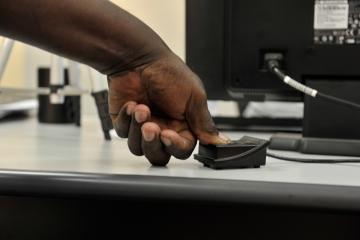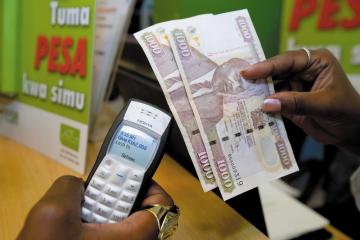
Should government payments be digitized?

The COVID-19 pandemic and the associated economic restrictions are likely to result in an increase in poverty for the first time in the past 20 years. This has catalyzed a worldwide increase in social protection measures—such as government cash grants and other public measures to ensure a basic level of welfare. As of May 2020, 190 countries/territories had planned, launched, or modified their social protection safety net programs, often cash-based, in response to the pandemic. These reforms have highlighted a growing need for the expansion or adoption of digital government social protection payments, also known as government-to-person (G2P) payments, to better serve their constituents. Decision makers have looked to digital payment tools during the pandemic to decrease the implementation challenges created through in-person physical cash distribution.
Digitization allows governments to send money without having to transfer physical cash and has proven particularly useful during the pandemic to reduce in-person contact and limit the spread of disease, while maintaining critical economic relief measures. Many countries in Africa had started digitizing government transfers prior to the pandemic. South Africa was one of the first countries to do so by introducing a biometric identification (ID) and debit card grant payment disbursement system. With the spread of mobile money, particularly in East Africa, governments, and large nonprofits such as GiveDirectly have been using mobile money to distribute cash grants to beneficiaries. In addition, many sub-Saharan Africa countries have or are considering rolling out digital ID systems and coupling them with social protection programs to uniquely identify individuals and provide a system for authentication of the beneficiaries.
The digitization of G2P payments can occur at different stages of the payment chain: selection of beneficiaries, such as through digital IDs, management of payment systems through digitized, high-frequency data collection, or money distribution, for example using mobile money or direct bank transfers. Many countries are aiming to digitize their economies in the hope that this will allow them to centralize systems, make them more efficient, and reach a wider range of beneficiaries, among other benefits. While there is some relevant evidence on the merits and weaknesses of digitization G2P payments, there is still a great deal left to be studied and understood.
What are the possible effects of the digitization of G2P payments on beneficiaries?
Digitization of social protection programs could potentially transform the relationship between citizens and the state, if it allowed for more effective distribution, including:
Reduced cost to collect social protection payment: The digitization of payments can reduce the costs of payment collection for the recipient. These costs include not having to wait in line to collect the money, along with a saving on any transport cost. In addition, there may be tangible impacts of the time/money saved for other individuals within the household. A study in Niger found that households who received mobile transfers (as opposed to traditional cash transfers) had greater diet diversity and that their children ate more food. These impacts are likely due to reduced time and travel costs to obtain their transfers, as well as increased decision-making power for women.
Reduced delays and uncertainty in payments: When the existing infrastructure is strong, digital payments can reduce delays and uncertainty of G2P payments. Physical cash is difficult to transport over long distances. There may be delays in the delivery of the money due to weather or road infrastructure, especially in the rainy season. Not only is the digital transfer beneficial to reduce the stress of not knowing if the next payment will arrive, but the improved predictability and reliability of payments could allow individuals and households to plan and invest with a longer-term view.
Improved access to financial products and services: Digitized G2P payments could lead to greater financial inclusion through improved access to other financial products, such as loans and savings products. It is argued that once a bank or mobile money account is opened for the G2P payments, there is a higher likelihood that individuals would have access to other financial products. G2P payments are thought to be a gateway for financial inclusion, however more research would need to be conducted to support this claim.
More flexible payment modalities: Digitization allows for increased flexibility of G2P payment modalities in terms of the value of the payment and the timing. Digitized payments can more easily be made in lump sums or incrementally over time. Payment timing of when the money arrives can be adjusted more easily in digital payment systems compared with a physical cash-based form. Individuals may have a preference for smaller payments over time to limit their spending, or to have it arrive as a lump sum on a certain date to coincide with large payments, such as school fees. In addition, different schemes can be applied on top of the G2P payment to encourage healthy financial behaviors. For example, the labeling of accounts, which is easier to implement digitally than when in physical form, has shown to have positive effects on long-term saving behavior as shown through this study.
However, technology is but a tool and, if not used properly, could instead exacerbate the existing problems that beneficiaries face, or create new ones:
Exclusion of beneficiaries: If beneficiaries are not able to navigate the system of digital G2P payments, they may not be able to access their grants even when eligible, as seen in Jharkhand, India. In India, the use of Aadhaar—a digital biometric identification card—as a digital tool to authenticate beneficiaries, reduced the benefits for those who had not registered for an ID. Given that more vulnerable people are often also those who have less access to knowledge on technology, this could mean the most vulnerable are particularly susceptible to exclusion when shifting to a digital payment mechanism.
Predatory systems that leverage lack of digital (financial) literacy: The digital systems could undermine the intention of the cash transfer if poorly structured or have predatory financial inclusion elements. G2P payments can facilitate connection with other financial products; however, without adequate digital financial literacy, beneficiaries could be led into unwittingly connecting their accounts to financial products they do not require. As with the exclusion concern (above), this issue is particularly important as those who are the most vulnerable groups of people are also more likely to not have access to digital financial training. For example, in South Africa, Torkelson notes under Net 1’s biometric system, social protection beneficiaries had to place their fingers on multiple scanners without understanding why. This process, along with broader dubious practices and mass public outcry, led Net 1 to be charged at the Constitutional Court.
Privacy concerns: There may be privacy concerns when digitally collecting beneficiary data through the G2P program. Once the G2P program moves towards a digital distribution, the ease of surveillance is far greater. Beneficiaries who receive G2P payments may not fully comprehend the value of their data and the ways in which it could be used in a digital format. There are ethical questions around informed consent, linking of databases with other departments, and the ability for governments to discriminate based on the digital information. In countries where the program has to roll out quickly, before a strong privacy framework is available and enforceable, is a particular concern.
What are the effects of digitization of G2P payments on Government institutions?
Individuals who receive digital G2P payments are not the only group to benefit, governments who implement the systems could also realize positive gains from these reforms. Digital payments and IDs may help overcome systemic challenges, along with other implementation benefits through moving to a digital platform.
Reduction in leakages: In many low- and middle-income countries, pervasive corruption and tax evasion can undermine the provision of public programs, causing leakages and other service delivery delays and failures, and reduce the fiscal capacity of government agencies. For example, a 1996 Public Expenditure Tracking Surveys (PETS) survey of public schools in Uganda showed a leakage rate of 87 percent in Uganda’s education spending, which fell to 20 percent after the publication of the findings: in Tanzania, a 1997 PETS found 57 percent leakage in education and 41 percent in health spending; and in Ghana, a 2000 PETS found 50 percent leakage in education and 80 percent leakage in health. Evidence from India shows that digitization has the potential to reduce discretion and increase communication, thereby reducing corruption and leakages in program delivery.
Digital G2P payments could also help reduce quantity fraud. This type of fraud is slightly more difficult to monitor, but involves the beneficiary receiving a smaller quantity than the true eligible amount. Digital payments can assist with this type of fraud as the money moves directly to the beneficiary's account and limits the ability for middle-men to siphon off part of the payment.
Reduced implementation costs: Manual cash payments are cumbersome and costly to distribute. In some contexts, cash-based social protection programs are delivered by mobile vehicles moving between villages. These benefits can be realized if there is a strong existing digital infrastructure in the country. The study in Niger considers the cost of implementing a mobile transfer. Although the initial cost of the mobile transfer program was higher, due to the purchase of mobile phones, its pre-transfer cost was approximately 20 percent lower than that of physical cash distribution. This suggests that, once phones and mobile money agents are in place, mobile transfers could be a simple and low-cost way to deliver payments.
More effective monitoring: Further, digitization of payments can lead to more effective process monitoring, which allows implementers the ability to make real-time decisions based on incoming data. In a context where there is a reliable identification system in place, digital data collection can make policy decision making easier and more responsive to the needs of the people on the ground.
In addition, the improved monitoring and data collected on the beneficiaries could assist with improved targeting. G2P payments with a strong digital ID could also help to identify who is eligible from an objective perspective. A digital footprint can assist with linking individual’s information across departments, which could allow for a better picture of the individuals, informing who is the most vulnerable and in need of assistance.
Although there are many possible benefits of a digitized G2P system, there are also potential political economy challenges or pitfalls that governments may experience: While there is limited evidence on the impacts of digital G2P payments on governments, a study in India highlights how a direct bank transfer of a subsidy (in place for an in-kind subsidy) led to less diversion of the subsidized goods to the black market, reducing leakages. Despite these positive outcomes, this reform was abruptly terminated after political lobbying leading to the elections, highlighting the importance of political economy challenges with such policy reforms. Politically connected agents may lobby against, and may even succeed in subverting policy reforms when their discretionary (and often illegitimate) benefits are threatened. Further, if the digital payment system is badly implemented and leads to exclusion of beneficiaries or mistrust in the data collection and use, this could harm the long-term credibility of the government and associated institutions.
Open questions
While there has been much progress on the spread of digital payments across Africa, we still have little evidence about how to effectively design policies to maximize benefits from digital G2P payments. The Digital Identification and Finance Initiative in Africa (DigiFI)—hosted by J-PAL Africa at the University of Cape Town—aims to fill this evidence gap by generating cutting-edge policy research projects focussed on the study of innovative government payment and ID systems. We lay out our research agenda in our framing paper.
Authors Note: This is the second blog in the DigiFI series on the various aspects of their research and policy priorities. The next blog will focus on mobile money.



